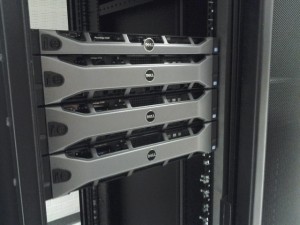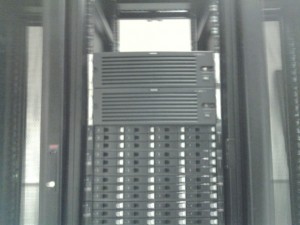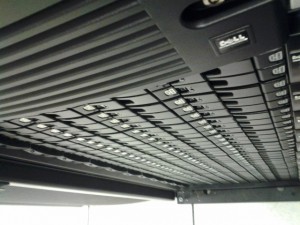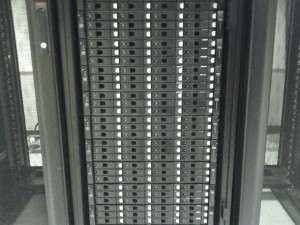The first step in the Storage and Virtual Infrastructure project has been completed! The new hardware was delivered and installed last week. Tim Vruwink documented the installation at the shared data center in DCL with a series of photos.
The installation took Tim, Chuck Kibler, Michael Tipsword, and a host of other CITES technicians more than a day to complete. By 7 PM, we had nearly filled two racks of equipment (14 shipping pallets) with servers and disks.
The new system features 12 disk enclosures, each housing 24 disks. There are two different disk types, fast disks that hold 600 GB, and slow disks that hold 2 TB. Altogether, this storage array has a raw capacity of 220 TB. Currently, the Library manages about 100 TB of production and preservation data.

The top server is used for managing and keeping statistics on the servers, and the bottom three run the entire Library infrastructure
Our current infrastructure needs seven servers to provide enough processing power and memory for all the services the Library provides. With this upgrade, we will consolidate that to just three servers, plus one management console, and have room to more than triple our capacity. Which we plan to do.

Redundant storage controllers, used for connecting the disks to the servers so the storage can actually be used
The next step will be to upgrade the Main Library so it can communicate with this new storage and virtual server array in DCL. We will then shift production services to DCL, and use the Main Library as an off-site backup. This configuration was chosen because DCL offers better facilities in their data center, and therefore should provide a more stable and secure environment than the Main Library building.
There are still many challenges ahead, but this installation represents a major milestone toward a truly world-class digital infrastructure.



